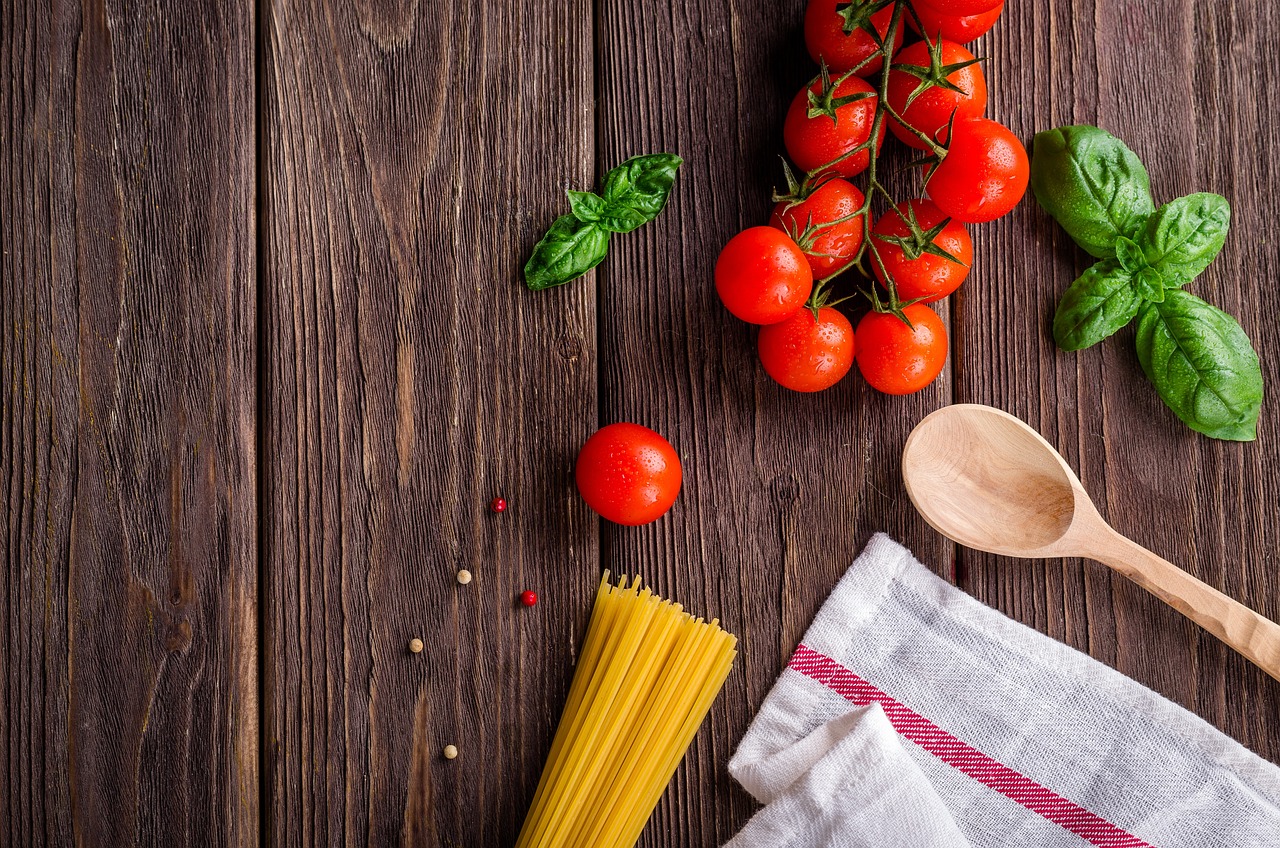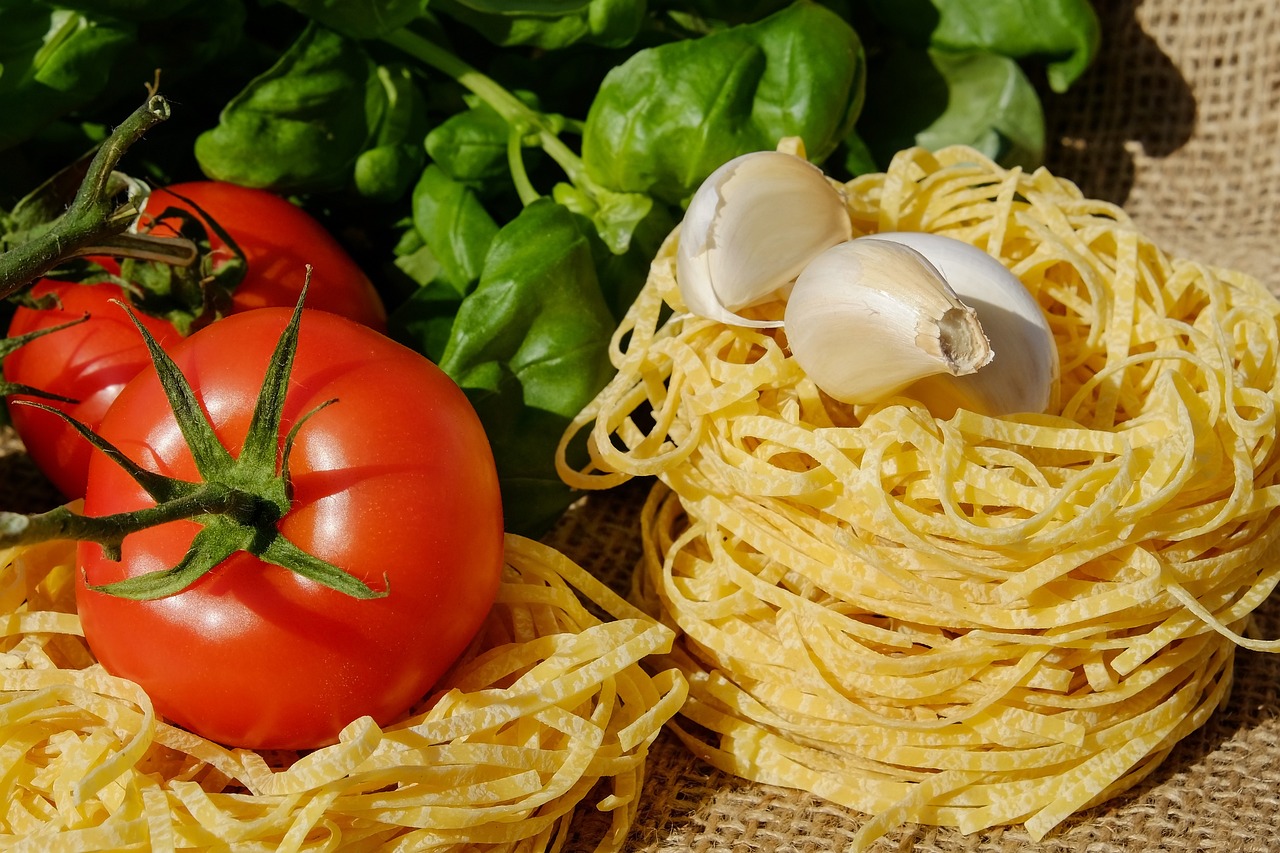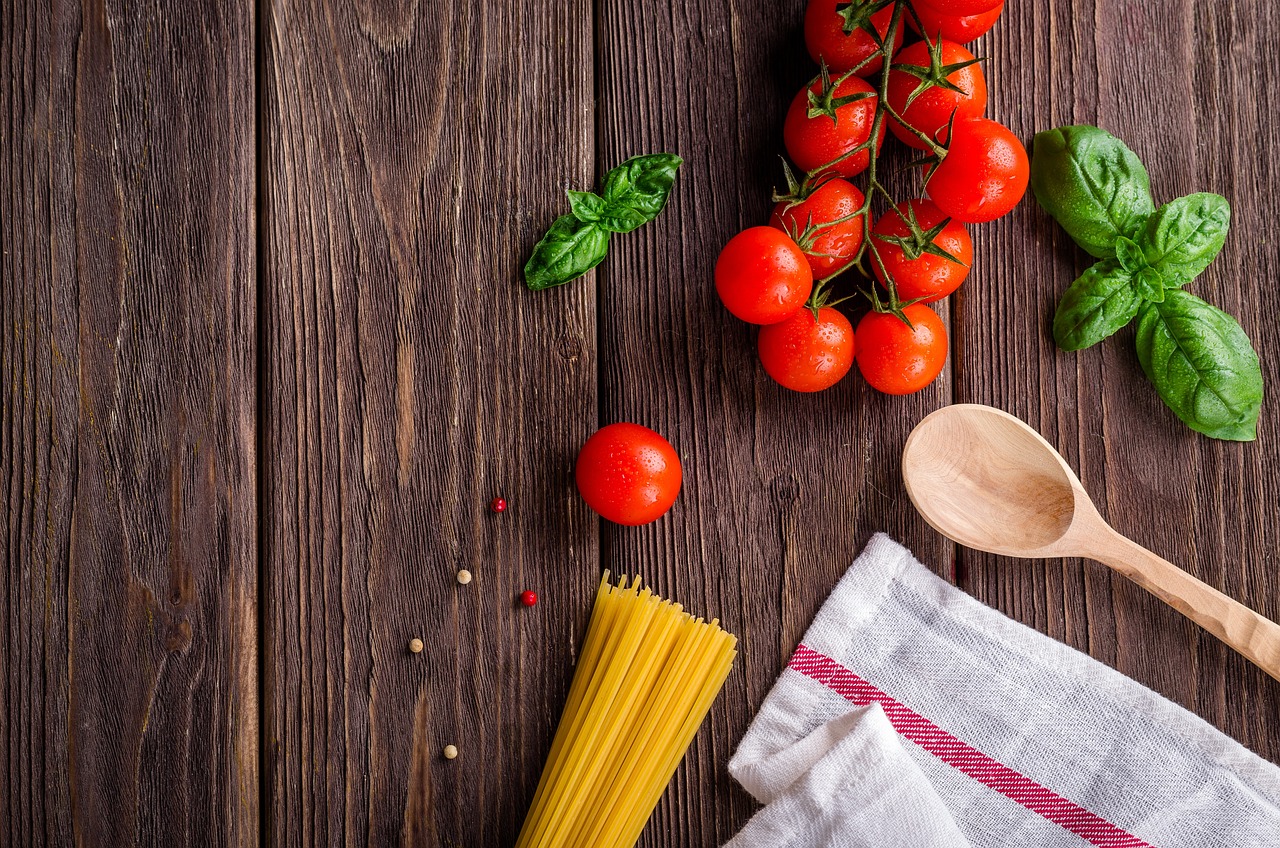If you’ve ever dreamed of creating your own delicious homemade noodles, then look no further than the magic of pasta makers. These ingenious kitchen gadgets take the guesswork out of pasta making and allow you to effortlessly whip up fresh, delicious noodles in the comfort of your own home. At Tastepan.com, we pride ourselves in providing expert reviews and recommendations for top-quality kitchen equipment, and pasta makers are no exception. Whether you’re a seasoned chef or a beginner in the kitchen, these handy tools will revolutionize your cooking experience and bring a touch of homemade goodness to your meals. Get ready to unleash your inner pasta master and discover the joy of homemade noodles with the help of a pasta maker.

Benefits of Homemade Pasta
Healthier Option
Making your own pasta at home gives you full control over the ingredients, allowing you to create a healthier alternative to store-bought options. You can choose whole wheat flour or even gluten-free flour to cater to specific dietary needs. Additionally, homemade pasta doesn’t contain any preservatives or artificial additives, making it a wholesome choice for you and your family.
Customization
Homemade pasta provides endless opportunities for customization. You can experiment with different types of flour, such as semolina or spelt, to create unique flavors and textures. You can also add ingredients like herbs, spices, or even vegetables directly into the dough to enhance the taste and nutritional value of your pasta.
Taste and Texture
There’s no denying the superior taste and texture of homemade pasta. The freshness of the ingredients and the love that goes into the preparation make a noticeable difference. Homemade pasta boasts a delicate, tender texture and a rich, satisfying flavor that store-bought options simply can’t replicate.
Types of Pasta Machines
Manual Pasta Machines
Manual pasta machines are a traditional and affordable option for making homemade pasta. These machines typically consist of a hand-cranked roller and cutter. They allow you to roll out the dough to the desired thickness and cut it into various pasta shapes. While they require a bit of physical effort, manual pasta machines give you complete control over the process and allow you to work at your own pace.
Electric Pasta Machines
For those looking for convenience and ease of use, electric pasta machines are a great choice. These machines automate the process of rolling and cutting the dough, eliminating the need for manual labor. Electric pasta machines often have multiple speed settings and various attachments for creating different pasta shapes. They are perfect for those who want to save time and effort in the pasta-making process.
Attachments for Stand Mixers
If you already own a stand mixer, you can invest in attachments specifically designed for making pasta. These attachments connect to the front of your stand mixer and transform it into a powerful pasta machine. With these attachments, you can mix, roll, and cut your pasta dough without needing a separate machine. This option is ideal for those who want the versatility of a stand mixer and the convenience of making fresh pasta.

Understanding Pasta Machine Features
Material and Durability
When choosing a pasta machine, consider the material and durability. Traditional pasta machines are often made of stainless steel, which is sturdy and long-lasting. However, there are also machines made of plastic, which may be more affordable but may not offer the same durability. Consider your budget and how frequently you plan on using the machine when deciding on the material.
Number of Pasta Shapes
Another important feature to consider is the number of pasta shapes that the machine can produce. Some machines come with only a few basic shapes, while others offer a wide variety. Think about the types of pasta you enjoy and choose a machine that can accommodate your preferences. Having the option to create different shapes adds excitement and variety to your homemade pasta experience.
Adjustable Thickness Settings
The ability to adjust the thickness of your pasta dough is crucial for achieving the desired texture. Look for a pasta machine that offers multiple thickness settings. This feature allows you to create thin, delicate pasta for dishes like angel hair or thicker pasta for heartier sauces. Having control over the thickness gives you the freedom to experiment with different recipes and adapt to your personal taste.
Getting Started: Preparing the Dough
Ingredients
Making pasta dough is a simple process that requires just a few basic ingredients. The most traditional recipe calls for all-purpose flour, eggs, and a pinch of salt. However, you can also use alternative flours or add flavors such as spinach or tomato puree to create unique variations. Regardless of the ingredients you choose, make sure they are of good quality to ensure the best results.
Mixing Techniques
Mixing the dough is a crucial step in pasta-making. You can either mix it by hand on a clean surface or use a stand mixer with a dough hook attachment. By hand, create a well in the center of the flour and crack the eggs into it. Gently whisk the eggs with a fork, gradually incorporating the flour until a dough forms. With a stand mixer, simply combine the ingredients and let the machine do the work. Whichever method you choose, ensure that all the ingredients are well combined and a smooth dough is formed.
Resting the Dough
After the dough is mixed, it needs time to rest. This step allows the gluten in the flour to relax, resulting in a more pliable dough. Wrap the dough in plastic wrap and let it rest at room temperature for at least 30 minutes, but it can also be refrigerated for up to 24 hours. Resting the dough improves its texture and makes it easier to roll out and shape.

Using a Manual Pasta Machine
Rolling the Dough
Using a manual pasta machine involves gradually rolling out the dough to the desired thickness. Start by dividing the dough into manageable portions and flatten it with your hands. Set the pasta machine to the widest setting and pass the dough through the roller. Fold the dough in half and pass it through the roller again, repeating this step several times. Gradually decrease the thickness setting and pass the dough through the roller, folding and repeating until the desired thickness is achieved.
Cutting the Pasta
Once the dough is rolled out, it’s time to cut it into the desired pasta shape. Attach the appropriate cutter to the pasta machine and feed the rolled dough through the cutter. Catch the cut pasta with your hands or a drying rack to prevent it from sticking together. Gently toss the pasta to separate the strands and ensure they are evenly coated with flour.
Tips for Using a Manual Pasta Machine
- Always start with a well-floured surface to prevent the dough from sticking.
- Roll the dough in small portions to avoid overworking and drying it out.
- If the dough becomes too dry, lightly brush it with water to increase its pliability.
- Dust the freshly cut pasta shapes with flour to prevent them from sticking together.
- Experiment with different pasta shapes to add variety to your meals.
Using an Electric Pasta Machine
Preparing the Dough
To use an electric pasta machine, prepare the dough following the same steps as for a manual machine. Mix the ingredients, let the dough rest, and divide it into manageable portions for rolling.
Automatic Rolling and Cutting
The beauty of an electric pasta machine is its ability to automatically roll and cut the dough. Simply feed the portioned dough into the machine, and it will do the rest. The machine will flatten the dough into the desired thickness and cut it into the chosen pasta shape with precision. This automation saves time and effort, allowing you to focus on other aspects of your pasta-making process.
Tips for Using an Electric Pasta Machine
- Familiarize yourself with the machine’s settings and functions before starting.
- Keep the dough portions small to ensure even rolling and cutting.
- Pay attention to the speed settings to achieve the desired texture and thickness.
- Clean the machine thoroughly after each use to maintain its performance.
Using Attachments for Stand Mixers
Preparing the Dough
When using stand mixer attachments for making pasta, the process begins by preparing the dough in the same way as for manual or electric machines. Choose a pasta recipe, mix the ingredients in the stand mixer bowl, and let the dough rest.
Attaching and Operating
After the dough has rested, attach the pasta-making attachment to the front of your stand mixer. Follow the specific instructions provided by the manufacturer to secure the attachment properly. Once attached, turn on the stand mixer and feed the dough into the attachment. The stand mixer will mix, roll, and cut the dough automatically, giving you perfectly shaped pasta in no time.
Tips for Using Stand Mixer Attachments
- Use the appropriate speed setting recommended by the manufacturer for the best results.
- Keep an eye on the dough as it feeds into the attachment to ensure it doesn’t become tangled.
- Clean the attachments thoroughly after each use to maintain their performance.
Exploring Pasta Varieties
Traditional Italian Pasta Shapes
Homemade pasta opens the door to endless possibilities when it comes to pasta shapes. You can create traditional Italian shapes like spaghetti, fettuccine, or penne. Each pasta shape holds sauces and flavors differently, adding versatility to your pasta dishes.
Regional Variations
Different regions in Italy have their own unique pasta shapes that are specific to their cuisine. Exploring regional variations allows you to experience the authentic flavors and traditions associated with each area. From the twisted strozzapreti of Emilia-Romagna to the ricotta-filled tortelli of Lombardy, each region boasts its own specialty pasta that is worth trying.
Creative Pasta Shapes
Homemade pasta also provides the opportunity to get creative and experiment with unique pasta shapes. You can create fun shapes like bowties, spirals, or even recreate your favorite animal or object. Let your imagination guide you and have fun experimenting with unconventional pasta designs.
Flavored and Colored Pasta
Infusing Flavors into Pasta Dough
One of the advantages of making homemade pasta is the ability to infuse flavors directly into the dough. You can add ingredients like herbs, spices, or even cheese to enhance the taste of your pasta. Incorporating flavors into the dough allows you to create dishes with a distinctive and personalized touch.
Natural Coloring Techniques
Homemade pasta also provides the opportunity to experiment with natural coloring techniques. You can add vegetables like spinach for a vibrant green color or beets for a deep red hue. By using natural coloring ingredients, you can create visually stunning pasta dishes that are as pleasing to the eye as they are to the palate.
Tips for Flavored and Colored Pasta
- Start with small amounts of flavoring and coloring ingredients and adjust to taste.
- Incorporate the ingredients gradually while mixing the dough to ensure even distribution.
- Experiment with different flavors and colors to create unique pasta creations.
Maintaining and Cleaning Your Pasta Machine
Cleaning Recommendations
Regularly cleaning your pasta machine is essential for maintaining its performance and longevity. After each use, remove any dough remnants by brushing or wiping them off with a dry cloth. Avoid using water or soap unless specified by the manufacturer. If needed, use a dry brush or toothpick to clean hard-to-reach areas. Always refer to the user manual for specific cleaning instructions provided by the manufacturer.
Storing Tips
When not in use, it’s important to properly store your pasta machine to prevent damage and ensure its longevity. Clean the machine thoroughly before putting it away to prevent any residue from hardening. Store it in a cool, dry place, away from direct sunlight and moisture. If your machine has detachable parts, keep them together to avoid misplacing them.
Maintenance and Troubleshooting
Regular maintenance is crucial to keep your pasta machine in optimal condition. Follow any maintenance guidelines provided by the manufacturer, such as lubricating moving parts or replacing worn-out components. If you encounter any issues with your pasta machine, consult the user manual or contact customer support for troubleshooting assistance. Proper maintenance will prolong the life of your machine and ensure you can enjoy homemade pasta for years to come.
In conclusion, investing in a pasta machine opens up a whole new world of culinary possibilities. From healthier and customizable options to delightful taste and texture, homemade pasta is a rewarding endeavor. Whether you choose a manual, electric, or stand mixer attachment, understanding the features and techniques involved will help you create delicious and impressive pasta dishes. With a little practice and creativity, you’ll be able to explore a wide range of pasta varieties, experiment with unique flavors and colors, and maintain your pasta machine for years of homemade pasta enjoyment. Happy pasta-making!

